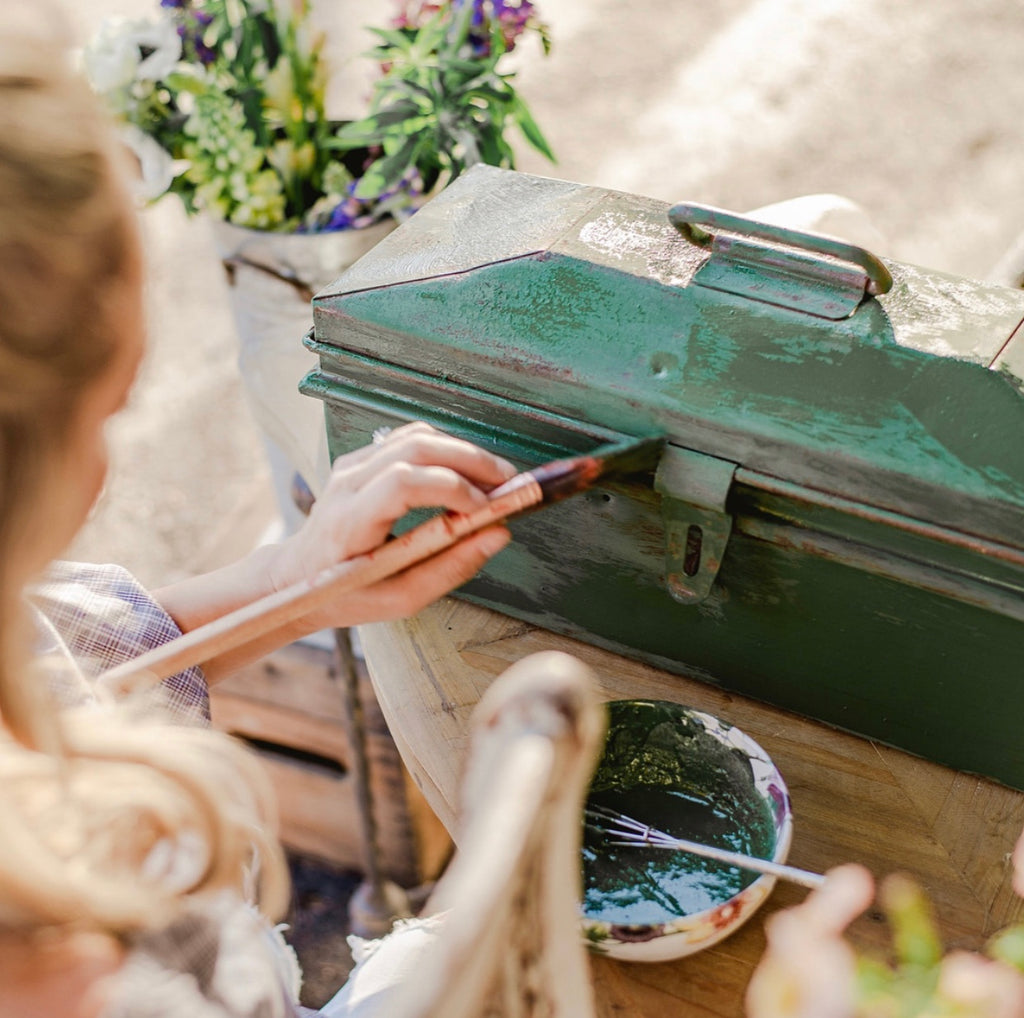5 Natural Paints to Make at Home

Natural pigment paint is made from natural materials such as minerals, plant matter, and insects, which are ground into a fine powder and mixed with a binder to form a paint. Natural pigment paints can be made at home, and we offer ingredients and recipes on our website. Our Milk Paint is a natural paint recipe that I developed about 9 years ago based on ancient paints made from natural pigments, milk, and minerals.

Here are 5 natural paint recipes that you can make at home using ingredients from your kitchen or garden.
-
Shaker Stain- In a small sauce pan spoon the 1tbsp pigment into 8oz (250ml) water. Bring pigment and water to a boil then let the mixture simmer slowly until water has evaporated. You will have a somewhat thick paste at the bottom of the pan. Allow the stain to cool completely. I recommend applying with a lint free cotton cloth.
-
Starch Paint- Add 1 1/2 tbsp flour into a saucepan slowly adding up to 8oz water. Heat on medium heat until water is absorbed. Slowly add any remaining water stirring all the time. Simmer over low heat for approximately 10-15 minutes. Remove pan from heat and slowly add slaked pigment* stirring well to fully incorporate the color.
-
Glair Paint- Slake the pigment ( see bottom of post for details) Put 1 egg white in a small bowl and gently whisk until slightly frothy. Let stand util the clear liquid glair separates away from the froth. Remove the froth with a metal spoon. Slowly mix slaked pigment into the remaining flair. Be careful not to add too much pigment, the goal is a delicate transparent finish. This paint is suitable for hand-painted details on porous surfaces.
-
Quark and Oil Glaze- Slake the pigment (see bottom of post for details) Put 9oz (approximately 1cup) of quark into a bowl and whisk with an electric blender while gradually drizzling in 1/4 cup Fiber Oil (Hemp Seed Oil). Once mixed add 3 tbsp slaked pigment and dilute with water to create a glaze. This paint is suitable for porous walls such as milk painted, lime washed, lime painted, tempera painted, and plastered walls. Measurements given should cover approximately 40 sqft.
-
Herb-infused paint: Add a few handfuls of dried herbs (such as lavender, rosemary, or thyme) to 1 cup of natural paint and let the mixture sit for a few days to infuse the paint with the herb's natural oils. You can use this paint to add a subtle fragrance to a room or to give your objects a natural, rustic look.
Leave a comment